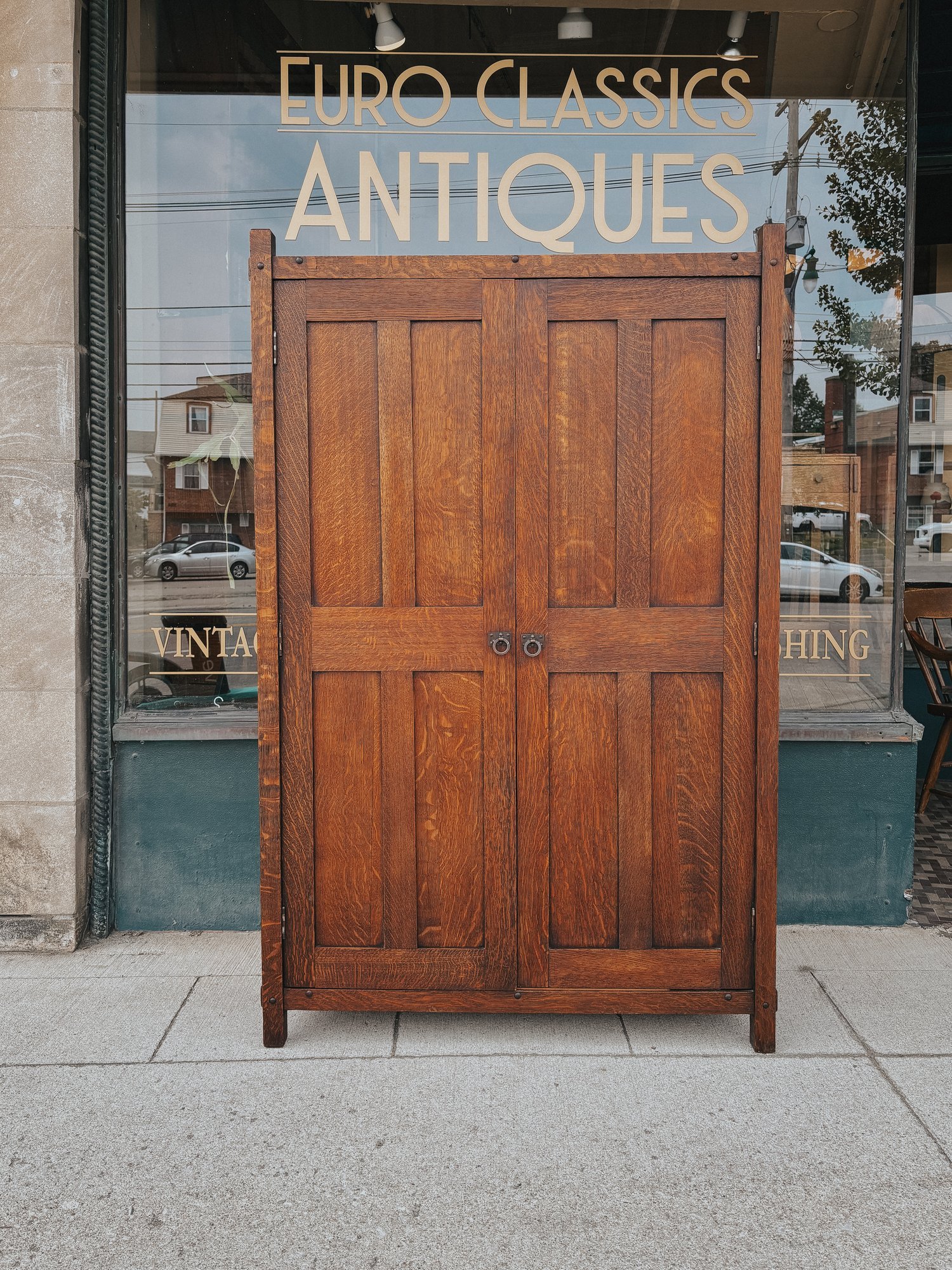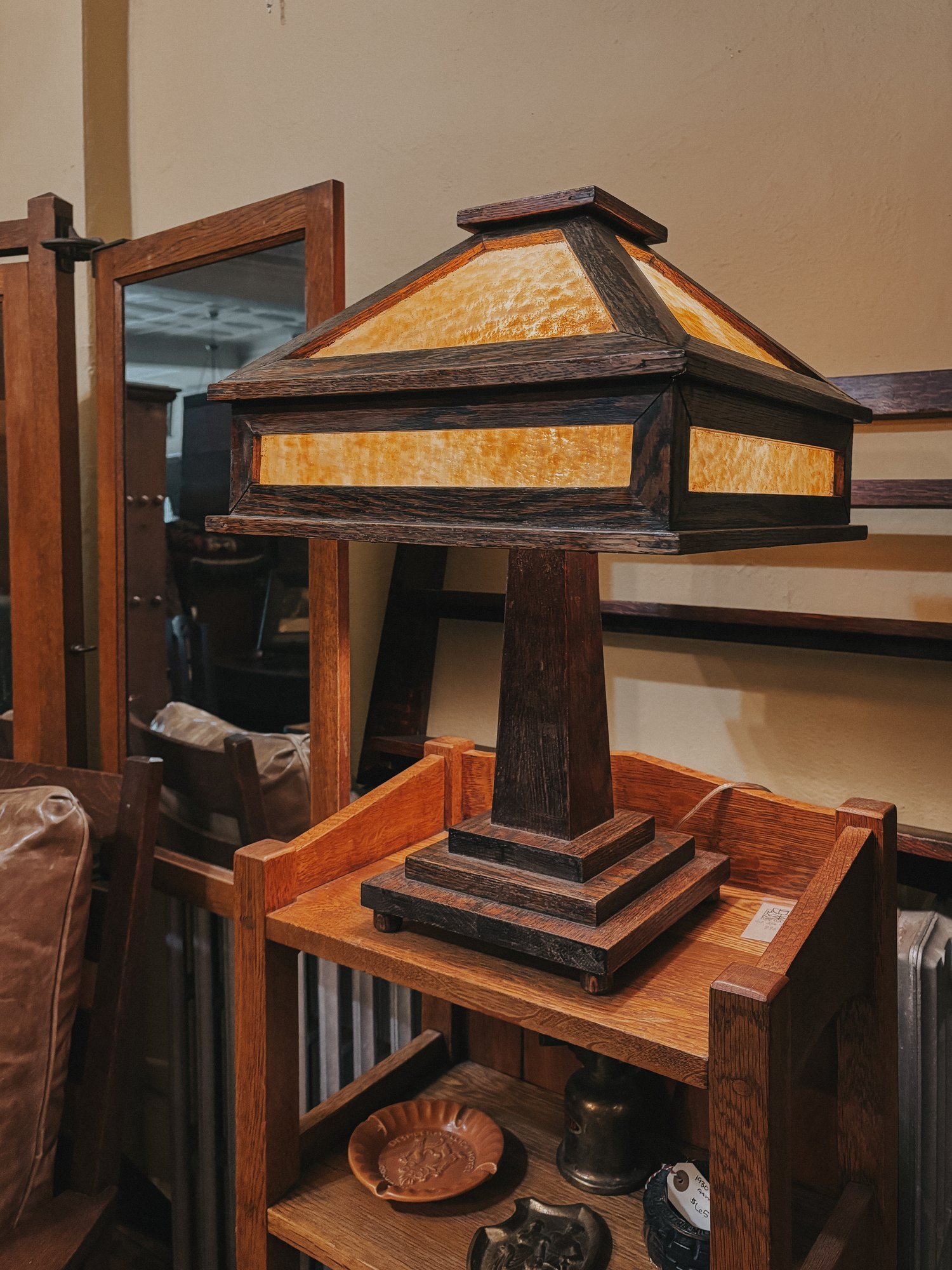Can Furniture Be Art?
Exploring the idea of functional sculpture through Arts and Crafts furniture
Walk into any fine art museum and you’ll see paintings, sculptures, and installations celebrated for their emotional power and visual beauty.
Now walk into a home with a Gustav Stickley sideboard or a Roycroft rocker — and you may notice something similar: proportion, material, and craftsmanship that stop you in your tracks.
It begs the question:
Can furniture be art?
At Euro Classics Antiques, we believe it can — and in the world of Arts and Crafts furniture, it often is.
“Bring into your home nothing that you do not know to be useful or believe to be beautiful.”
— William Morris
When Function Meets Form
Unlike modern art, Arts and Crafts furniture wasn’t made for galleries.
It was made for living rooms and libraries, for porches and dining halls. But the movement’s core philosophy — that beauty, utility, and honesty in materials can coexist — brings it remarkably close to the realm of fine art.
Let’s take a few examples.
A Table vs. a Sculpture
Take a Gustav Stickley Library Table and place it next to a contemporary metal sculpture in a museum.
The metal sculpture shows off its welds — industrial and raw.
The table shows off its mortise-and-tenon keyed joinery — exposed and honest.
Both are intentional.
Both say: “This is how I was made.”
One is forged in steel. The other is crafted from quartersawn oak, with a natural grain pattern that rivals the brushstrokes in an oil painting.
The museum might label the sculpture:
Untitled (Form in Steel), 2022
You could just as easily label the table:
Functional Form in Oak, c. 1906
Materials That Tell a Story
In modern art, materials are often symbolic.
In Arts and Crafts furniture, the material is the message.
Old-growth oak was chosen not just for strength, but for its symbolism: enduring, humble, and rooted in nature.
Hammered copper pulls weren’t factory-made — they were hand-shaped like a blacksmith’s signature, or a jeweler’s touch.
Stickley Brothers Server - decorative flower tack on the plate rail.
When you rest your hand on the arm of a Charles Limbert armchair, you’re touching more than wood. You’re touching over 100 years of form, function, and purpose.
That’s not just furniture. That’s functional sculpture.
So, What Makes It Art?
The difference between furniture and art often comes down to intent.
Arts and Crafts makers weren’t just building functional pieces — they were building a philosophy. Their designs were rooted in the same ideals as the great sculptors and painters:
Honesty in materials
Simplicity in form
Beauty in everyday life
Isn’t that what art is meant to do?
Bringing Art Into the Home
When you collect a piece of Arts and Crafts furniture, you’re not just buying something to sit on or store books in.
You're buying a piece of design history, crafted by hand, often signed by the maker — and always made to last.
You're not just decorating.
You're curating.
Set of 6 Mission Oak Dining Chairs – Quarter Sawn Oak, Leather Upholstery
Furniture can absolutely be art.
And in the best cases, it’s the kind you get to live with.
Written by Euro Classics Antiques
Specializing in Arts and Crafts furniture, restoration, and education since 1986.
Mission Oak Lamp with slag glass




